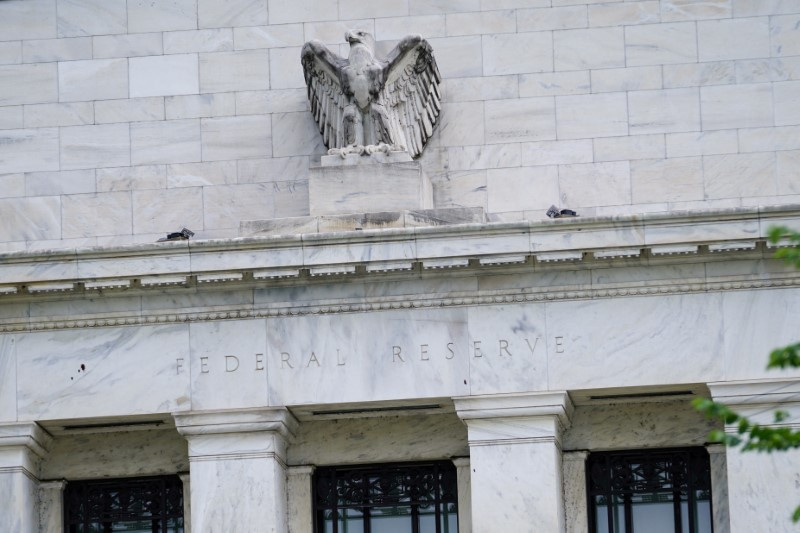By Sarupya Ganguly
BENGALURU - U.S. Treasury yields will rise modestly over the coming months on expectations financial markets have once again overestimated how much the Federal Reserve can slash interest rates this year, according to a Reuters poll of bond strategists.
The benchmark U.S. 10-year Treasury yield, which moves inversely to prices, touched a 14-month low of 3.67% in early August following a safe-haven rally on fears a possible recession in the world's largest economy would force rapid rate cuts from the Fed.
Inflation trending towards the U.S. central bank's 2% target and recent signs of weakness in the labor market also pushed interest rate futures last week to price in about 120 basis points of Fed rate cuts in 2024.
However, investors have since attributed the recent spike in market volatility to the unwinding of large leveraged positions causing a sudden rise in the Japanese yen and a plunge in the Tokyo stock market early last week, rather than major concerns about the U.S. economy.
Wall Street's barometer of investor anxiety, the Cboe Volatility index, swiftly receded after reaching a four-year high last week, while stocks made a roaring comeback following the year's most dramatic plunge.
This rapid cooldown was accompanied by tempering rate cut pricing to about 100 bps, although still double the amount predicted just a month ago.
Those bets are likely to face disappointment in a lack of policy follow-through, according to medians in an Aug. 7-13 Reuters poll of bond strategists, who stuck to markets' earlier view of 50 bps of Fed rate cuts by end-year.
"The Treasury market is pricing in too draconian an economic scenario - the recession probability priced into the rates market, specifically, is too high," said Vishal Khanduja, co-head of broad markets fixed income at Morgan Stanley (NYSE:MS) Investment Management.
"What's priced in until the end of the year? We don't think the Fed will be able to cut so many times. We see two, maybe three cuts by January," Khanduja added.
Only two of 31 respondents said the Fed would cut by as much or more than current market pricing of 100 bps in the three remaining FOMC meetings this year.
The 10-year Treasury note yield, currently around 3.90%, was forecast to move very little in coming months.
The yield will rise modestly to about 4.00% in a month and trade around that level until at least end-January, according to median forecasts from nearly 45 bond strategists in the survey.
It will then fall only 10 bps to 3.90% in a year.
A three-fourths majority of poll respondents, 15 of 20, also said it was more likely the 10-year note yield goes lower than they expect by end-year, instead of higher.
The interest rate-sensitive 2-year Treasury yield, currently 4.00%, and down roughly 30 bps since the start of August, will rise marginally to 4.20% in three months, according to survey medians.
It will then plummet 20 bps to 4.00% by end-January and then a further 30 bps to 3.70% in a year.

If realized, the "inverted" spread between 2-year and 10-year Treasury yields, historically a reliable indicator of a U.S. recession, will fully revert to zero by end-January, before turning positive 20 bps in a year.
"The market is in dip-buying mode and risky assets are beginning to show signs of nervousness. We're expecting the Treasury market will consolidate in and around current ranges and the front end of the curve will continue to drift lower in rates," said Ian Lyngen, head of U.S. rates strategy at BMO (TSX:BMO) Capital Markets.